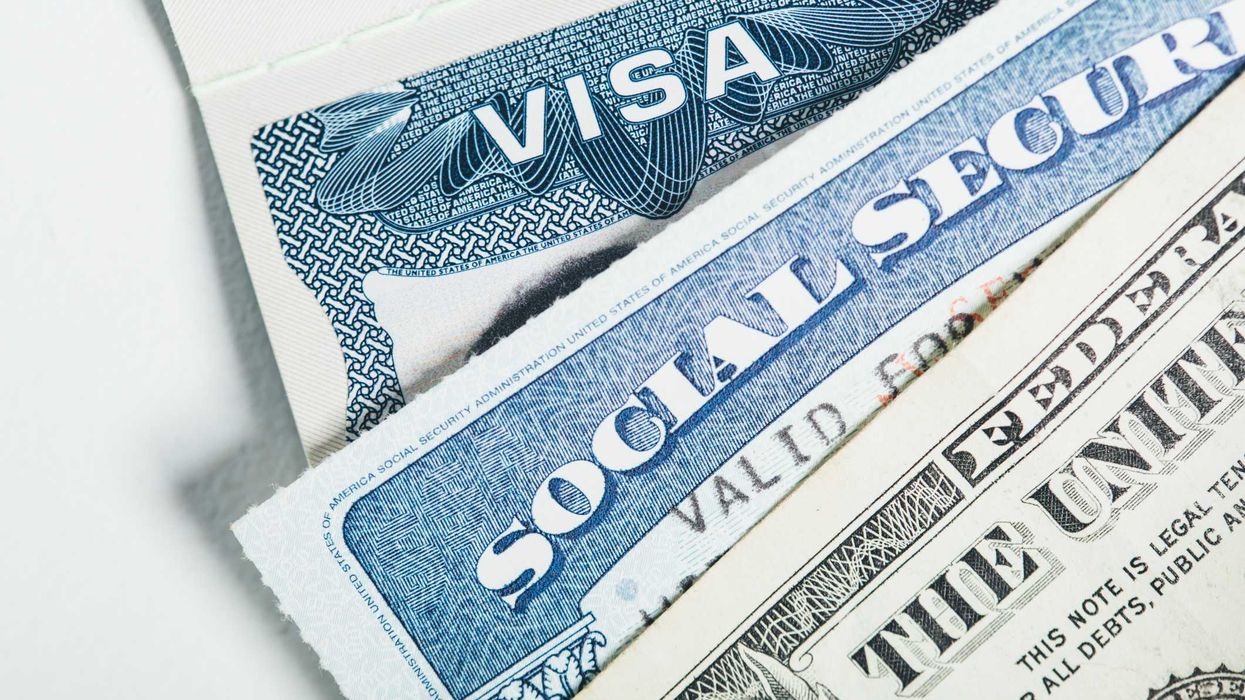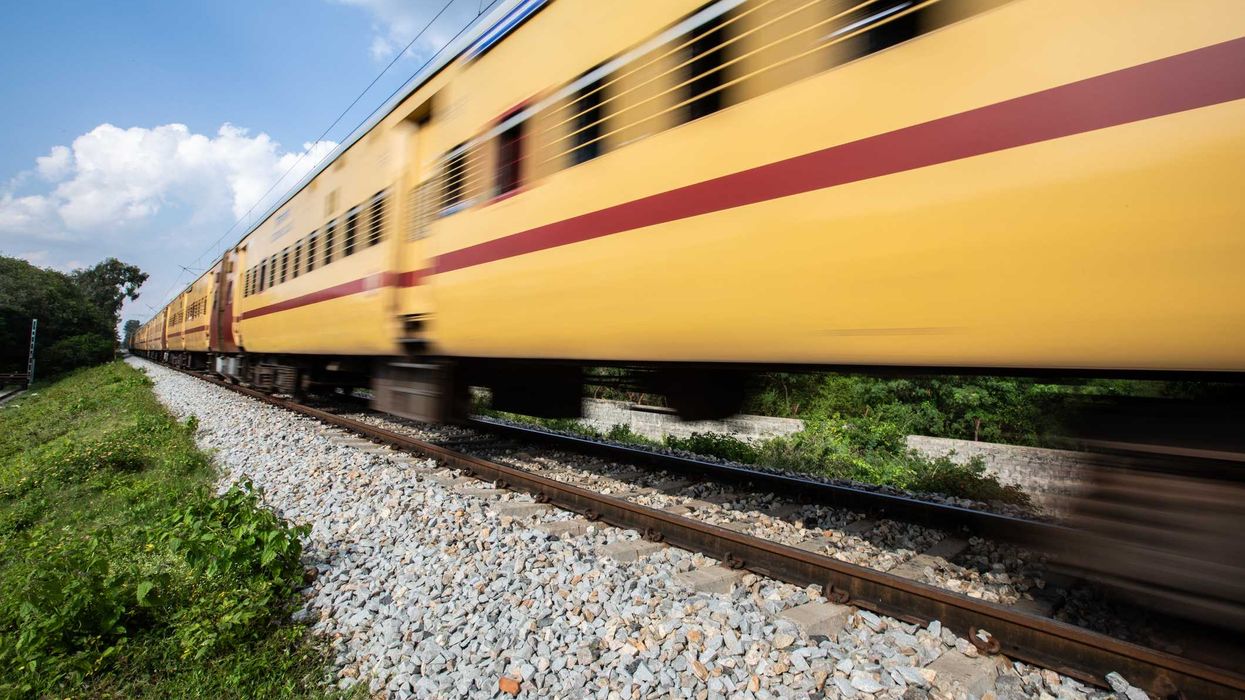The Fulcrum strives to approach news stories with an open mind and skepticism, striving to present our readers with a broad spectrum of viewpoints through diligent research and critical thinking. As best we can, we remove personal bias from our reporting and seek a variety of perspectives in both our news gathering and selection of opinion pieces. However, before our readers can analyze varying viewpoints, they must have the facts.
What Is the $100,000 Visa Fee?
This is a new one-time $100,000 application fee for employers seeking to sponsor foreign workers under the H-1B visa program. The visa is designed for highly skilled professionals in fields like tech, medicine, and engineering.
Who does it apply to, and when does it take effect?
It applies only to new H-1B petitions (not renewals or current visa holders). It takes effect in the next annual lottery cycle (the system used to allocate the 85,000 annual H-1B slots). Employers must submit proof of payment before filing the petition, and petitions will be restricted for 12 months if payment isn’t made.
Why Was It Introduced?
President Trump framed the fee as a way to:
- Protect American jobs by discouraging companies from hiring cheaper foreign labor.
- Curb abuse of the H-1B system, especially by outsourcing firms that flood the lottery with low-wage applications.
- Raise revenue—the administration estimates it could generate over $100 billion to fund tax cuts and reduce national debt.
Who’s Affected?
- Tech giants like Amazon, Microsoft, Apple, and Google—which collectively sponsor tens of thousands of H-1B workers—are expected to be hit hardest.
- Startups and small businesses may struggle to afford the fee, potentially losing access to global talent.
- Universities and hospitals that rely on H-1B workers for research and healthcare roles are also concerned.
Are There Any Exceptions?
This is not 100% certain, but the administration has stated:
- Medical professionals (e.g., physicians and residents) may be exempt.
- National interest waivers can be granted by the Secretary of Homeland Security.
- Current visa holders are not subject to the fee when reentering the U.S.
What Is the H-1B Visa?
The H-1B visa is a non-immigrant visa that allows U.S. companies to temporarily employ foreign workers in specialty occupations that require theoretical or technical expertise.
Key Features:
- Fields covered: IT, engineering, finance, medicine, architecture, and more.
- Education requirement: Typically a bachelor’s degree or higher in a relevant field.
- Duration: Initially granted for three years, extendable to a maximum of six years.
- Annual cap: 85,000 visas per year (65,000 regular + 20,000 for U.S. master’s degree holders).
Who Uses It?
- Major tech firms (Google, Amazon, Microsoft)
- Universities and research institutions
- Hospitals and medical centers, startups, and consulting firms
Are there any related programs?
Trump also introduced the “Trump Gold Card.” For $1 million, individuals can obtain permanent residency and a path to citizenship, and for $2 million, companies can sponsor a foreign worker under a corporate version of the Gold Card. A “Platinum Card” is also in development, offering tax exemptions for wealthy foreigners spending up to 270 days in the U.S.
Legal and Industry Reactions:
- Immigration attorneys are preparing lawsuits, citing a lack of public comment and potential overreach of executive authority.
- Tech companies have issued travel warnings to H-1B employees abroad.
- India’s government has expressed concern over the humanitarian and economic impact.
Do Merit Requirements Still Exist?
Even with the new fee, the core H-1B eligibility criteria remain unchanged:
- The job must be in a specialty occupation requiring a bachelor’s degree or higher.
- The applicant must have relevant education and experience.
- Employers must pay the prevailing wage, matching what similar U.S. workers earn.
You can’t just pay $100,000 and get a visa if you don’t meet the qualifications.
But the $100,000 Fee Adds a Major Barrier:
This new fee applies only to new H-1B applications, and it’s paid by the employer, not the worker. However, it disincentivizes companies from sponsoring foreign talent unless they’re absolutely essential. It favors wealthier firms that can afford the fee, potentially sidelining startups and nonprofits. However, it does not replace the lottery system as applicants still go through the random selection process, but only if the fee is paid.
No Merit-Based Waivers (Yet):
Unlike some other visa categories, there’s no clear path for merit-based exemptions from the fee. The only known exceptions are medical professionals in underserved areas and national interest waivers, which are vague and not well-defined yet.
Bottom Line:
Merit is still required to qualify for the H-1B visa, but the new policy puts a price tag on access. It’s not a “pay-to-play” system in the purest sense—you still need the skills—but it’s now a pay-to-compete system.
If you’re an employer who can’t afford the $100,000 H-1B visa fee or can’t justify it, there are still viable paths for skilled workers to work in the U.S. legally.
What Are the Visa Alternatives if Employers Can’t Afford the $100,000 Fee?
- O-1 Visa: Extraordinary Ability: For individuals with exceptional achievements in science, education, business, arts, or athletics.
- No lottery or cap—direct merit-based approval.
- Requires proof of national/international recognition.
- Faster processing and tailored to specific projects or roles.
- Ideal for researchers, artists, and elite professionals.
- EB-1A Visa: Permanent Residency for Top Talent: A green card option for those with extraordinary ability—no employer sponsorship required.
- Self-petition allowed.
- Leads to permanent residency.
- No labor certification or H-1B-style restrictions.
- Best for long-term career planning.
- L-1 Visa: Intra-Company Transfers: For employees of multinational companies transferring to a U.S. office.
- Must have worked abroad for the company for at least one year.
- No annual cap.
- Suitable for managers, executives, or specialized knowledge workers.




















